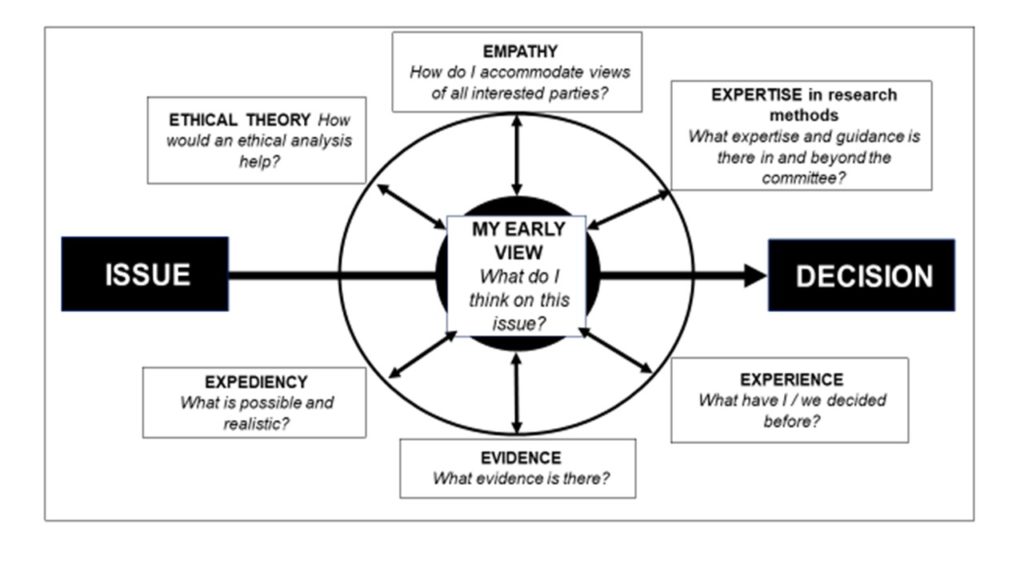By Hugh Davies
It’s right that all with a legitimate interest in research contribute to its design, review, conduct and dissemination. To thrive, research must be an honest partnership between ALL involved.
Few would argue but, in accepting this, we need a process to allow us resolve differences when they arise. Here, in this blog, I describe a practical and simple approach depicted in the figure that can open up deliberations on any issue to explore our reasons for any decision and judgement we make. It’s a tool for better practical decision making, introducing some consistency of deliberation and perhaps in the future help develop common moral positions. My (limited) purpose in this article is to put it before a wider audience and ask if it can help by bridging gaps (moral engineering) between all those who have legitimate interest in research.
It’s no final word: I simply present it for dissection and discussion. I’d love to hear comments.
Figure: A decision making model for research. More detail can be found here.
It’s founded on the proposition that deliberations centre around our “early or personal views”. On any particular issue we bring these to the debate; it’s where we start. The purpose of deliberation is then to turn “I think ” into “We agree ” (recognizing that “We” is not the plural of “I”). If all personal views are in accord, the decision is likely made; little more need be done. If there is disagreement, however, we need to go further and explore the reasons for our own views and turn to more objective “external referents” as depicted on the circle. They are linked (hence the circle) as none on their own provides a firm base for judgement and it’s likely that resolution of different issues will rest on or emphasize different “Es”.
In this way it proposes we can take two routes to a decision – via a “central” or “circle” line (with some similarities with Kahneman’s systems 1 and 2 or Gladwell’s “Thin Slicing” (1,2)). The first, direct, route is speedy and efficient. In everyday life, time constraints prevent detailed analysis of all issues so it’s suited to the common times when there is agreement, little moral quandary, low risk or familiarity with the area. But when there are new research methods, disagreement, controversy, seemingly high risk or unfamiliarity with the issue under consideration we must take a different route. In these cases we need to take the slower, more deliberative and less direct “circle” line.
References
- Kahneman D 2011. Thinking, fast and slow. Penguin
- Gladwell M 2005. Blink the power of thinking without thinking. Penguin
Author: Hugh Davies MA MD FRCP FRCPCH
Affiliations: Oxford A Research Ethics Committee
Twitter: @clinicalresear3
Email: reviewingresearch@gmail.com
Competing interests: None
